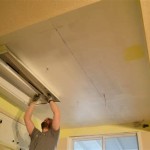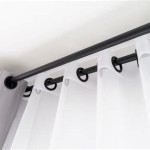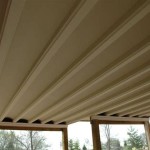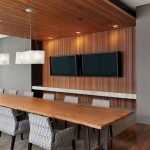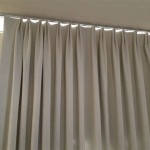Getting The Right White Ceiling Fan With Light For Your Home Theater Room
A home theater room transforms a residence into a private cinematic experience. Achieving optimal viewing conditions requires careful attention to various aspects, including lighting and ventilation. A white ceiling fan with a light fixture can serve a dual purpose in this setting, providing both airflow and illumination. However, selecting the appropriate model requires considering several key factors beyond mere aesthetics. This article will explore the elements to consider when choosing a white ceiling fan with a light for a home theater, ensuring it enhances rather than detracts from the viewing environment.
Understanding the Functionality Requirements
Before considering specific models, it's crucial to define the functional requirements of the ceiling fan in the home theater. This involves assessing the size of the room, the desired level of airflow, and the necessary lighting intensity. A small room will require a smaller fan with a lower CFM (cubic feet per minute) rating to avoid creating excessive noise or a disruptive breeze. Conversely, a large room will need a fan with a higher CFM to effectively circulate air throughout the space.
The lighting needs are equally important. The primary purpose of a home theater is to provide a darkened environment for optimal viewing. Therefore, the light fixture on the ceiling fan should offer adjustable brightness and preferably dimming capabilities. This allows for subtle illumination that doesn't interfere with the screen's image while still providing enough light for navigation and safety. Additionally, the color temperature of the light should be considered. Warmer tones (around 2700-3000K) are generally preferred for creating a relaxing and inviting atmosphere, while cooler tones (above 4000K) can appear harsh and distracting in a home theater setting.
Another key consideration is the potential for noise generated by the fan motor and blades. Home theaters are designed for immersive audio experiences, and a noisy fan can significantly detract from this. Opting for a ceiling fan with a DC motor, known for its quiet operation compared to AC motors, is highly recommended. The blade design also plays a role in noise reduction. Aerodynamically optimized blades, often made of materials like ABS plastic or composite materials, can minimize air turbulence and thus reduce noise levels.
Evaluating Lighting Technology and Features
The light fixture integrated into the ceiling fan is a critical component, particularly in a home theater environment. LED (light-emitting diode) technology is now standard for most ceiling fan lights due to its energy efficiency, long lifespan, and versatility in terms of color temperature and brightness control. When selecting a ceiling fan with an LED light, it's essential to verify that the light source is dimmable and offers a wide range of brightness settings.
Dimmability is crucial for adapting the light level to suit the viewing experience. Options for dimming can range from simple on/off to multi-level dimming or even a smooth, continuous dimming range. The control method for dimming should also be considered. Some ceiling fans come with a remote control that allows for adjusting the light level from the seating area, while others rely on a wall-mounted dimmer switch. Remote-controlled dimming offers greater convenience and flexibility in a home theater setting.
The type of light fixture is another factor to consider. Enclosed light kits, where the light source is concealed behind a frosted glass or acrylic diffuser, are often preferred for home theaters as they provide a more diffused and even light distribution. This helps to minimize glare and hotspots on the screen. Open light kits, where the bulbs are exposed, can create unwanted shadows and reflections, which can be distracting during movie viewing.
Smart features are also increasingly available in ceiling fans, including the ability to control the fan and light via a smartphone app or voice assistants like Amazon Alexa or Google Assistant. This can add another layer of convenience and customization to the home theater experience. For example, you could set the fan to automatically adjust the light level when a movie starts or program different fan speeds and light settings for various activities.
Assessing Design and Aesthetic Compatibility
While functionality is paramount, the design of the ceiling fan should also complement the overall aesthetic of the home theater. A white ceiling fan offers a neutral and versatile option that can blend seamlessly with various decor styles. However, even within the category of white ceiling fans, there are different design elements to consider, such as the blade style, the motor housing design, and the overall shape and proportions of the fan.
The blade style can significantly impact the appearance of the fan. Straight blades offer a clean and modern look, while curved blades can add a touch of elegance and sophistication. The number of blades is another design element to consider. Three-blade fans are generally more contemporary in appearance, while five-blade fans tend to have a more traditional look. The material of the blades can also influence the overall aesthetic. White blades made of wood or composite materials can add texture and visual interest to the fan.
The motor housing design should also be considered. A sleek and minimalist motor housing can create a more streamlined and unobtrusive appearance, while a more ornate motor housing can add a touch of character to the fan. The finish of the motor housing should also be carefully chosen to complement the other elements in the room. A matte white finish can blend seamlessly with a white ceiling, while a brushed nickel or chrome finish can add a touch of contrast. The white color should also be considered in terms of its shade and tone. A true white might be too stark for some rooms, while an off-white or cream shade might be more appropriate. Consider the existing trim and wall colors when choosing the right white tone for the ceiling fan.
The overall size and proportions of the fan should be appropriate for the size of the room. A fan that is too large can overwhelm the space and make it feel cramped, while a fan that is too small may not provide adequate airflow or illumination. As a general rule, a fan with a blade span of 52 inches is suitable for rooms up to 400 square feet, while a fan with a blade span of 44 inches is appropriate for rooms up to 225 square feet. For smaller rooms, a fan with a blade span of 36 inches or less may be sufficient.
Consider the height of the ceiling when selecting a ceiling fan. For ceilings lower than 8 feet, a flush-mount or hugger-style fan is recommended to ensure adequate headroom. For higher ceilings, a downrod can be used to lower the fan to the optimal height for airflow and illumination. The length of the downrod should be chosen based on the ceiling height, with longer downrods used for higher ceilings.
Finally, remember to consider the overall style of the home theater when selecting a ceiling fan. Whether the room is decorated in a modern, traditional, or eclectic style, there is a white ceiling fan that will complement the overall design. By carefully considering the functionality requirements, lighting technology, and aesthetic compatibility, you can choose a white ceiling fan with a light that enhances the viewing experience in your home theater.

How To Choose Ceiling Fan Light Bulbs

How To For A Ceiling Fan Reviews By Wirecutter

Oaks Decor Cotti 20 In Color Changing Integrated Led Flush Mount Smart White With Clear Blades Fandelier Ceiling Fan Light Remote Included 7 Blade The Fans Department At Com

Oaks Decor Cotti 20 In Color Changing Integrated Led Flush Mount Smart White With Clear Blades Fandelier Ceiling Fan Light Remote Included 7 Blade The Fans Department At Com

How To For A Ceiling Fan Reviews By Wirecutter
Why Designers Think These Ceiling Fans Aren T Cool Anymore And How To Choose A Better Option

Ceiling Fans At Lowe S

Home Theater Design Ideas You Ll Want To Copy A Blissful Nest

How To Choose A Light Bulb For Your Ceiling Fan

Change A Ceiling Fan Light Bulb Lowe S
Related Posts

